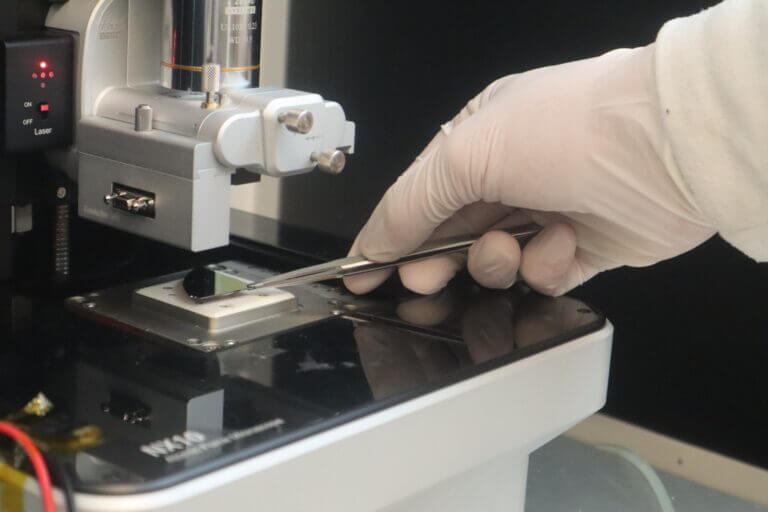Researchers have built surfaces from layers of atoms that slide over each other, thus causing the electrons inside to skip. In the future, they hope that it will be possible to develop advanced information technologies based on them

"Equations, such as the Schrödinger equation (the fundamental equation of motion of physical systems), do not allow us to fully understand the interactions between all the particles in matter," says Dr. Moshe Ben Shalom from the Layered Crystal Physics Laboratory at Tel Aviv University. "We are talking about billions of particles, so we test them in experiments. Thus, if we understand how electrons arrange themselves in certain crystals - we can develop applications such as devices for storing computer information and processing it. Sometimes the electrons choose one side more than the other, become polarized, and their choice can be turned into a unit of information that can be used in fields such as computing, communication and medicine."
In two recent studies, which were published in the prestigious journal Science, Dr. Ben Shalom and his team placed two identical layers of atoms (crystals), one on top of the other (a kind of surface that resembles a sandwich), under an atomic force microscope - and discovered that they move and slide slightly within the plane , and thus the electrons in them jump from one layer to another, from the top to the bottom or vice versa. "This is the thinnest surface (with a thickness of two atoms) that we know of, where the polarization of electrons is visible and it is possible to control the direction of their jump between the layers," says Dr. Ben Shalom. "The same jumps can be used for information units (up - 1, down - 0, with or without electrical charge, similar to a bit in a computer that can be in one operating state at a time, 1 or 0). And in short, our discovery here is the assembly of thin atomic layers into a new crystal, and the sliding between them which causes the electrons to skip."
In the next step, the researchers put an electrode under and above the surface and thus caused an electron originating from an external atom to read the situation. "Because the surface is so thin, the outer electron from the electrode can quantum jump through the pair of polarized layers and read whether the electrons in the layers jumped up or down. That is, it can read the unit of information quickly and efficiently. On the basis of such a surface, it is possible to create electronic devices of a new type, which are used to store and process information based on quantum tunneling", adds Dr. Ben Shalom.
In their latest study, published in the prestigious journal Nature, and which won a grant from the National Science Foundation, the researchers assembled a surface from three to ten opaque layers, each one atom thick. They discovered that every time one of the layers is slid, the electrons are made to jump between them, up or down, all the way from the top layer to the bottom without stopping along the way ("ladder of polarizations" - that's what they called the phenomenon). "Using such surfaces, it is possible to house several information units in each area and produce more advanced devices, which can store and process more information. For example, if we have five layers, it is possible to populate them with five information units. These surfaces are thicker than the previous surface, but the size of their surface is similar," says Dr. Ben Shalom.
The researchers integrated the data obtained in their experiments into a computer simulation that can predict to which side the electrons will jump on other surfaces, of a different type. "Now, when it is clear that the simulation works, it can be used to calculate how electrons will act in other types of crystals and atoms and to build systems in which the electrons will bounce more or less, as required," concludes Dr. Ben Shalom.
Dr. Swaroop Dov, research student Noam Rab, and Prof. Moshe Goldstein from the School of Physics at Tel Aviv University also participated in the study; as well as Dr. Wai Chao, Prof. Oded Hod and Prof. Michael Orbach from the School of Chemistry at Tel Aviv University, and Prof. Lior Kronik from the Weizmann Institute of Science.
Life itself:
Dr. Moshe Ben Shalom, 45, married + three children (15, 12, 9), lives in Hod Hasharon. Co-founder of Slide-Tro company for building advanced electronic devices. In his spare time, he plays for the Tel Aviv University basketball team.
More of the topic in Hayadan:
